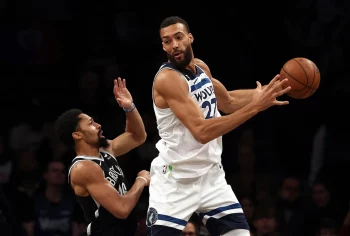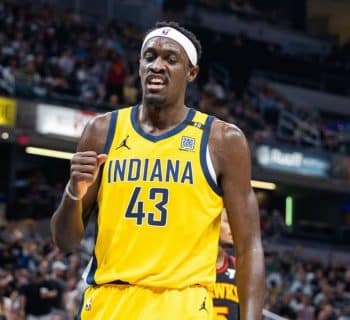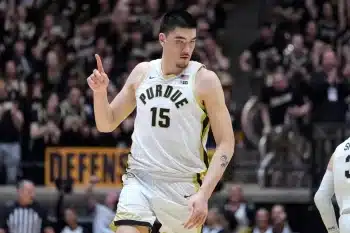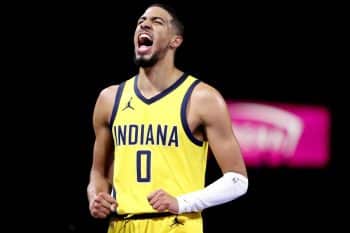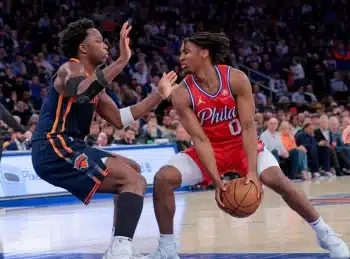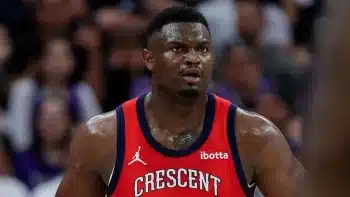NBA
Lakers Face Complications in Acquiring Thibodeau

Lakers Face Complications in Acquiring Thibodeau
With the Los Angeles Lakers job open, it has been reported that the team might attempt to trade for Chicago Bulls coach Tom Thibodeau, who remains under contract with the Bulls for another three years.
Such a deal is very unlikely even if there were some interest on the part of both parties because figuring out compensation that makes sense for both franchises is difficult, so this is a bit of an academic exercise. The Lakers would be fools to part with a cost-controlled top-three pick for Thibodeau and are so bereft of talent that even giving up a top-six pick (where the Lakers will fall if the lottery does not boost them into the top three) to get a win-now coach for a barren roster seems a poor idea.
For the Bulls team with championship aspirations and hopes of acquiring another star to pair with Derrick Rose for next season, Thibodeau is almost certainly more valuable than the raw sixth or seventh pick that the Lakers probably don’t want to give up anyway.
Nevertheless, it is an interesting exercise to determine exactly what the NBA could do. The first, as we saw during the Doc Rivers saga last summer, provides that a player cannot be traded for a coach. It was for this reason that the Los Angeles Clippers and Boston Celtics were prohibited from trading any players this season after it was reported that Celtics players such as Kevin Garnett and Paul Pierce might be included in a package deal for DeAndre Jordan as part of the Rivers transaction.*
*Incidentally, Clippers fans have to be pretty happy that trade did not go through. It is amazing what a season under Rivers has done for Jordan’s value.
So, only a draft pick can be traded for a coach. However, the Lakers face complications on that front as well due to the Ted Stepien* rule, which states that a team cannot make a trade that would leave it without a future first-round draft pick in any two consecutive years in the future.
*The exact language from the NBA’s newly released By-Laws, Section 7.03:
7.03. First Round Draft Choice. No Member may sell its rights to select a player in the first round of any NBA Draft for cash or its equivalent, or trade or exchange its right to select a player in the first round of any NBA Draft if the result of such trade or exchange may be to leave the Member without first-round picks in any two (2) consecutive future NBA Drafts.
Therefore, any trade involving a Lakers’ first-rounder is complicated by this:
- 2015 — Owe first-rounder (top-five protected, top-three protected through 2017, unprotected in 2018) to Phoenix Suns (Steve Nash).
- 2017 — Owe first-rounder (top-five protected through 2018, unprotected in 2019) to Orlando Magic (Dwight Howard). If 2015 first-rounder not sent to Phoenix by 2017, pick to Orlando converts to 2017 and 2018 second-rounders.
Therefore, the earliest future first-rounder the Lakers can trade is their 2019 pick. However, if the Lakers were really desperate to surrender yet another draft pick to the Bulls, they have two potential avenues open. The first would be a pick swap with Chicago for either the 16th or 19th pick in this year’s draft. This would be legal, because the Stepien rule merely requires that you not be without a first-round pick in consecutive future years, not that the retained pick necessarily be your first-round pick.
Another potential option would be making a trade of rights to their drafted player after the draft is over. This too would avoid running afoul of the Stepien rule, as it only applies to future first-rounders. Once the pick is made, it no longer counts. However, it is unclear whether the rights to a draftee would count as a “player” under the rule prohibiting the trade of a player for a coach, as the rule does not specifically address that situation.
To me, it would seem to violate the spirit of the rule if a player’s draft rights could be traded for a coach. But our CBA guru Larry Coon is of the belief that the league would likely allow it, although it would require a ruling if the situation ever arose.
Of course, as we’ve noted, it is exceedingly unlikely to do so in this case. Perhaps the greatest complication is that Thibodeau might not want to coach the Lakers. While “trading for” a coach is often discussed, coaches cannot be traded against their will under their existing contracts the way players can. The deal is structured so that the team receives the draft pick in exchange for simply letting the coach out of his contract. This is what happened last year, when the Celtics let Rivers out of the remaining three years and $21 million on his contract and he then signed for an identical figure (although with much more organizational power) with the Clippers. From a basketball standpoint, there is little reason for Thibodeau to leave a Bulls team that could conceivably compete for a championship next year and resides in the weaker Eastern Conference. This is especially so when the alternative is to coach a Lakers team saddled with Kobe Bryant’s albatross extension and little in the way of draft picks in the much more difficult West.
Even More Minutiae on Nikola Mirotic
This space has previously discussed the possibility of 2011 draftee Nikola Mirotic coming to the Chicago Bulls this offseason. He will no longer be subject to the rookie salary scale, easing buyout concerns. Mirotic must sign a minimum three-year deal under such an arrangement, per Article VIII, Section 2. In that piece, one option suggested to sweeten the pot for the Montenegrin was the idea of giving him a player option for a fourth year on the contract, which would assure him additional compensation in the case of injury or underperformance. However, upon further investigation it is unclear whether such a contract would be legal.
Article XII(2) puts limitations on when player options are allowed in contracts.
A Player Contract shall not contain any option in favor of the player, except: (a) an Option that: (i) is specifically negotiated between a Veteran or a Rookie (other than a First Round Pick) and a Team.
(Emphasis added.) Per Article I, Section (y), “‘First Round Pick” simply “means a player selected by a Team in the first round of the Draft.” There is no distinction listed between whether the rookie is being signed to a rookie scale contract or is signing the non-rookie scale VIII(2) contract. Therefore, it seems pretty clear that a player option* is not allowed in such a contract.
*Article XII(1) has similar language regarding team options.
However, the language of Article VIII(2) indicates that perhaps an option year can be included in such a contract. The exact language states that it is “a Contract covering no fewer than three (3) Seasons (not including any Option Year)…” The “not including any option year” implies that such contracts can have options. On the other hand, perhaps this was just included in case the rules on options elsewhere in the CBA are changed later on. Either way, the two appear somewhat inconsistent. My personal interpretation would be that team or player options on Article VIII(2) contracts are not allowed, but the league might certainly rule to the contrary.
It bears repeating that people have to write these CBAs under enormous pressure while being pulled in a million different directions. The process is usually to start with the previous CBA and make changes, and those changes are dependent upon what is collectively bargained between the parties ad hoc rather than as part of a coherent strategy. If a change is made, then the writers need to go back through the rest of the document to make sure nothing conflicts with the change, and/or that the change does not unintentionally alter the effect of any other provisions. With more than 500 pages of CBA to deal with, it is very understandable that potential contradictions like this can be missed.
Who Cares? This Will Never Happen.
It is almost certainly the case that neither of these exercises will prove the least bit important. Only a few first-rounders sign Article VIII(2) contracts; how often is an option year on such a contract really going to come into play? By the same token, coaches (or front office personnel) almost never get traded, and in this case the deal really doesn’t make sense for either side. But these exercises provide a window into the jobs of NBA decision-makers. If you are running an NBA team, you need to know the answers to these obscure questions – and perhaps hundreds of others like them – even if the scenario appears unlikely.
